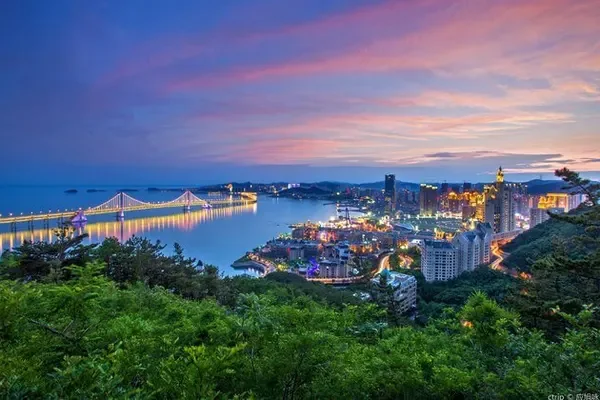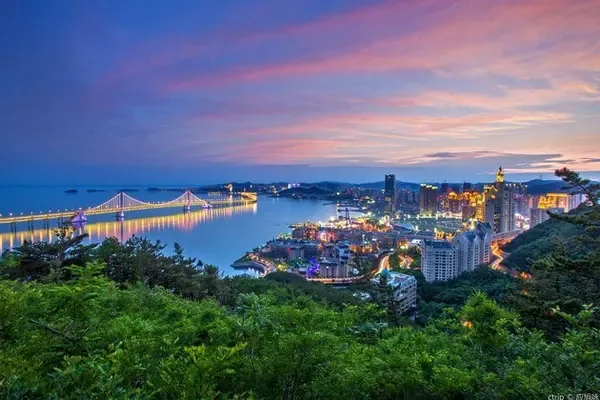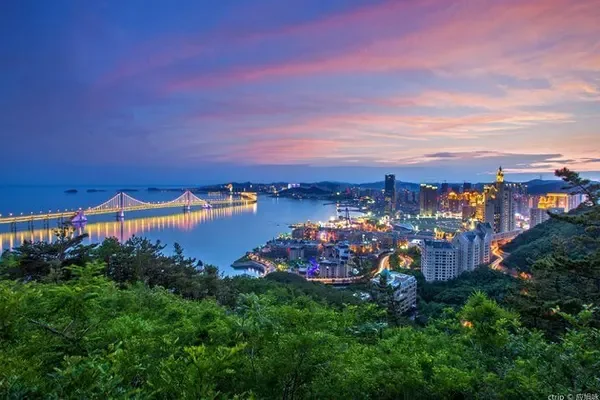10. Encountered a sandstorm
Leave the ruins of Milan to go to Ruoqiang, drive 98 kilometers along National Highway 315, and arrive at the hotel at 3:00 pm.
I have already entered the Taklimakan Desert, but I did not expect to encounter sand and dust weather this day.
Finally, I have experienced the harsh environment with long sand and dust, and the visibility is extremely poor. At this time, the mandatory speed limit does not work.
The air in Ruoqiang city is filled with dust, so we bought masks for 15 yuan each.
It's a Monday, and the museum is closed, which is a pity.
Eleven, Ruoqiang - Qiemo - Minfeng
I walked a total of 609 kilometers in two days, and the overall sand and dust weather has improved slightly, but the dust content in the air is obvious, and it is not an exaggeration to drive while wearing a mask. From this point of view, I was really lucky when crossing Lop Nur, except for the heat, there was no wind and sand. Travel across the Taklamakan Desert. Along the way, seeing large expanses of Populus euphratica forests, oases in the desert, or slowly flowing rivers can still surprise us. The Tarim Basin, a very familiar geographical name, is now vividly displayed in front of my eyes, and that feeling is very unique. The network signal along the way was very poor, and it was basically impossible to access WeChat.
12. Qiemo Museum
The visit to Qiemo Museum left a deep impression. It can be said that it is worthwhile to go to Qiemo just to see this museum. It really benefited me a lot. First of all, a Uighur lady in the museum accompanied the three of us and gave detailed explanations from beginning to end, so that we could fully appreciate the essence of the museum. Secondly, as a county-level museum, it is really impressive to have such a rich arrangement of exhibitions and facilities. Of course, this is inseparable from Qiemo itself having a long history and cultural heritage.
For the first time in this museum, I learned about the content of the Xiaohe cemetery and Qiemo's key position on the ancient Silk Road. The exhibits displayed in the museum cannot be photographed, especially some unearthed cultural relics. After seeing it, I really feel like I have traveled through it. Many thanks to the museum staff for their warm reception.
13. Arrive in Hotan
After the Qiemo Museum, I saw the image map of the ancient Silk Road in more detail in the Hotan Museum, and then I realized the "greatness" of this itinerary. Walking along the southern route, the journey was sometimes bleak and sometimes rich, but it never failed. Getting rid of the gray sandy air, I always feel that the natural environment of the Taklamakan Desert is so bad, and it still has a history of more than 2,000 years, which seems a bit unbelievable.
On this day, I saw the wild camels on the Gobi Desert, felt the kindness and enthusiasm of the Uighurs, witnessed the strict security barriers in all walks of life, and finally saw the sculpture of Uncle Kurban and the great man on the streets of Hotan, which immediately activated many memories. For me, this is the meaning of travel: to enrich the original cognition with images, even if you say: Oh, it turns out that this is the case, this trip is not in vain.
14. Hotan Museum
The Jiangsu Hotel where we stayed in Hetian is not far from the museum, take the No. 2 bus to the Finance School, and it is near the station. Museum visits are free, there is a security check at the entrance, and bags must be stored. The service is still in place.
The entire exhibition hall is not big, and there is a huge Hetian jade at the door, which is very regional. There are also two or two unearthed cultural relics in the exhibition hall, which cannot be photographed. We are particularly interested in the map of the ancient Silk Road in the exhibition hall, because we are walking along the southern line of the map to the places where ancient people walked, and we have a special feeling.
15. Via Yecheng
Leaving Hotan to go to Shache and passing through Yecheng, we deliberately went around and came to the Jiaman Mosque. We saw that the gate of the temple was closed and tourists were not allowed to enter. So I went to the old market nearby. We are watched like aliens, but it is definitely not hostile. It is a curious and enthusiastic look, followed by active communication with us.
We seem to feel that Yecheng is the most heavily guarded place on this trip, but it is also the most peaceful place. We bought two sets of rice from a stall selling pilaf. The owner was very enthusiastic and let us taste the taste first, and then packed it for us to take away.
16. Shache sweeping the streets
When we left Yecheng and turned to the G30 expressway, it meant that we turned from the southern line of the Silk Road to the northern line. Obviously, the road is getting better and better, and the air is getting better and better.
The blue sky and white clouds over Shache, the sunny weather that has not been seen for a long time! Walking on the street, the exotic scenery blows your face. Many people do not understand Chinese, but they are willing to communicate with us. Some "experienced" people heard that we are from Shanghai. , I will excitedly tell you about life in Pudong.
I met a group of students after school near the Shache Intangible Cultural Heritage Expo Park. Their lively and shy expressions also attracted us to actively communicate with them. The process was quite interesting.
17. Mausoleum of King Yarkand Khan
The royal mausoleum is located between the old city and the new city of Shache County. In the 15th and 16th centuries, Shache was the capital of the Yarkand Khanate in the Ming Dynasty. After we arrived in Shache, we went to visit this landscape. Here you can see the tombs of the 11th emperors of the Yarkand Khanate, which are well protected. Not many people visited, it seemed a bit bleak. Tickets for the visit are 15 yuan, half-ticket for those over 65 years old.
This is the Amanisha Khan Memorial Mausoleum next to the Royal Mausoleum. The appearance of the building is very distinctive, and the tickets are connected together.



